Are there better (authentic) UFO photos out there than the one you're looking at? Undoubtedly. Unfortunately, it seems that those photos have yet to be released, declassified, or otherwise made available to the general public. Until that day occurs, this one is going to have to do. It has many fans and a few detractors, but the story is still compelling.
2021 is the 50th anniversary of this photo being taken. In those five decades, the legend of the Lake Cote photo has only grown.
In 1999, for example, the French government put it on the cover of its COMETA report, a document long thought to be among the most open statements on the UFO subject ever made by any government. The report states that the ETH, Extra Terrestrial Hypothesis, is probably the most likely explanation for what's truly going on with these objects.
And, just in time for its anniversary close-up, the photo is back in the news.
In the May 10, 2021 issue of The New Yorker by Gideon Lewis-Kraus, New York Times reporter and author Leslie Kean, an early fan of the Cometa report, said that she owns a framed copy of the Lake Cote photo in question.
...On the wall behind her desk, there is a framed black-and-white image that looks like a sonogram of a Frisbee. The photograph was given to her, along with chain-of-custody documentation, by contacts in the Costa Rican government; in her estimation, it is the finest image of a U.F.O. ever made public.The Set-Up
In the fall of 1971 in Costa Rica, the country's Instituto Geográfico Nacional (IGN) — National Geographic Institute — was all about taking aerial photos as part of a preliminary study for future hydroelectric projects. The Costa Rican Instituto Costarricense de Electricidad (ICE) — Electricity Institute — was footing the bill in order to determine where the water would come from for the acquisition of land to develop the Arenal dam project.
So on September 4, 1971 at 8:25 a.m., experienced pilot Omar Arias was flying a twin-engine Canadian Aero-Commander F680 at a height of 10,000 feet above Lake Cote (in Spanish, Cote de Lago). They were cruising in northern Costa Rica, three miles north of the Arenal area and 25 miles south of the Nicaraguan border.
On board were photographer Sergio Loaiza, a specialist in aerial photography, plus geographer Juan Bravo, and topographer Francisco Reyes. Photographer Loaiza was using a R-M-K 15/23 camera, a special one-hundred pound map-making beast, donated by the German government and rigged under the fuselage of the plane. The film used was black-and-white emulsion with an ASA speed of 80, expected to produce a high resolution negative.
The device known as an intervallometer on the camera was set up to take one photo every 20 seconds. This was quite expensive, given the quality they were looking for, the technical detail needed in each frame, and the fact that they were shooting film.
What's important here is that the photographer intended to take a photo of an ordinary target, so the camera was set up to focus on infinity, and the exposure was automatically triggered.
No one — not the pilot nor his three crew members — saw a thing while they were up in the air doing their jobs. But when Loaiza got back and developed the film in the days ahead, he got the surprise of his life.
Every Picture Tells a Story
The developed negatives were printed on Kodak Safety aerial film, type 3665. Grade A.
Worth noting is that even after the photos were developed, no one immediately realized anything strange. It was only while reviewing the photos as part of the process, however, that Loaiza would enlarge the images and then examine the negative closely. During that often difficult and boring job, he realized for the first time just what they had managed to capture on film.
In one of the frames (#300), the film image showed what seemed to be a huge metallic disc. It was mind-blowingly clear thanks to the film stock and quality of the camera. This object did not show up on either the previous frame of film(#299) or on the one afterwards (#301).
There are a few key elements to appreciating this photo. The image covers an area that is roughly seven miles by seven miles and it's all in sharp focus. If you look closely in the original, high quality version you can see trees and roads (and some say they can even see farm animals).
The other thing is that it's a photo taken while looking down which automatically puts it in a different category from the typical photo taken looking up into the sky. Given that the altitude is fixed, it was also possible to get a good guess at the size of the object.
Finally, this object is seen against a uniform surface, the black background of the lake, which is in contrast with the disc shaped object itself.
All of this is to say that's one hell of a photo. Let's let New York Times reporter Leslie Kean explain in her own words. This is what she said on The New Yorker Radio Hour:
"I love this photo. It's probably the best photograph of a UFO ever taken. It was taken in the 70s from a government mapping plane in Costa Rica which had a camera strapped on the bottom of the plane and it was like going over the terrain. There was this disc object and you clearly see the sun reflecting off this round object that's got a little dot on the top and what's important about it is that it was a government photo. There's a clear chain of custody. It's always been in possession of the Costa Rican government so you know it's authentic and it's completely unexplained."Not everyone, of course, accepts this argument at face value. At the same time this article was being posted, skeptical researcher Mick West was posting his own article and those who want a deeper dive can read West's arguments here.
(Click to enlarge image)
Investigation
Kean makes a big deal about chain-of-custody, or provenance, of the photo. It started, of course, with the Costa Rican government and photographer Sergio Loaiza who received an initial cold-shoulder on talking about it from his employers in the immediate aftermath:
"At the time we were completely banned from talking about it, we could not tell anyone."Eventually the film negative got turned over to Ricard Vilchez who ran a civilian UFO group in San Jose, Costa Rica. Vilchez met with Loaiza in 1980 and heard the whole story.
Loaiza always maintained that the equipment used was special, to the point that if there had been a speck of dust between the lens and film, the equipment would not have worked. Asked if he could have made a mistake, he said:
"There was no possibility (of an error). There was no trick."After Vilchez and Loaiza met, the photo got sent to the Ground Saucer Watch (GSW) in the United States. The group's leader William Spaulding gave it a good going over including some early computer enhancement. He thought it was legit.
In 1985, noted UFO researcher Dr. Jacques Vallee enters the picture when he visited Vilchez in Costa Rica, heard the story, and got a copy of the negative. Vallee ran it past contacts in both the U.S. government and at a California tech company. Neither group had the time or money to direct their true efforts to analysis so two years later, in December 1987, Vallee took it to Dr. Richard Haines, a retired aerospace engineer who'd worked for NASA and who Vallee knew in San Francisco, and Haines rolled up his sleeves. The photo got digitized, enlarged and analyzed. Originally, Haines focused on the lighting. The disk image appears to possess lightness/darkness shading that is typical of a three-dimensional object that is illuminated by collimated light such as the sun. It appears to be a shallow cone with an axis of symmetry and a darker point or area at the tip of the cone. Haines also noted that one side had a sharp "knife-edge" focus while the other was diffuse and amorphous. He felt that the darker region might not be a shadow but that the lighter region was actually a source of light.
In 1989, Vallee and Haines wrote a "Photo Analysis of an Aerial Disc Over Costa Rica" for the Journal of Scientific Exploration. The 19-page report concluded:
In summary, our analyses have suggested that an unidentified, opaque, aerial object was captured on film at a maximum distance of 10,000 feet. There are no visible means of lift or propulsion and no surface markings other than darker regions that appear to be nonrandom. This case must remain "open" until further information becomes available.The Costa Rica laboratory that first processed the photo estimated the disc to have a diameter of nearly 220 feet. The GSW's Spaulding thought it might have been more like 120 feet. Whichever numbers you accept, the thing captured on camera was large — at least half a football field and maybe as big as a whole one.
The photo was also analyzed in France, hence its feature position on the cover of that country's Cometa report.
There's always been speculation about whether the craft had just emerged from Lake Cote or was about to go into it. There are local stories galore about objects coming out of the lake. Because neither negative on either side of #300 shows the craft or even water roiling, there's no way of knowing. Yet even if it's a giant garden variety UFO, it is rendered in specific, clear detail.
That original negative has been retained by the Costa Rican government and is in the the National Archive there. Copies exist, such as the one reviewed by Vallee and Haines.
Why It's Important Today
For one, it's a vivid answer to Elon Musk who has become famous of late for asking where all the good UFO photos are. Dear Elon, here's one...
The real answer, though, is that the good UFO photos keep getting taken away and disappeared. The stories go back to the 1950s, and have often been reported. It happened most recently to the crew of the USS Nimitz when hard drives with evidence of the Tic-Tac encounter were confiscated from the ship by men in suits who didn't stick around to leave their names.
There are probably hundreds, if not thousands, of excellent photos of UFOs in various government archives around the world. Someday soon, we can hope, they will finally be released for public consumption and see the light of day.
In the meantime, we have Lake Cote to look at and ponder. It's not fuzzy or unclear. It is what it is. Take a good hard look. You decide.
NOTE: Historical details are hard to verify and can be contradictory. If you see ways to improve the accuracy of this article, leave a note and we'll update it.
Trail of the Saucers is edited by Bryce Zabel and currently includes writing from senior contributors Carolyn Brouillard and Mark Hammons, plus the work of Ryan Sprague, Kevin Brackley, Michael Lindemann and others. The links below report on three other interesting UFO cases.

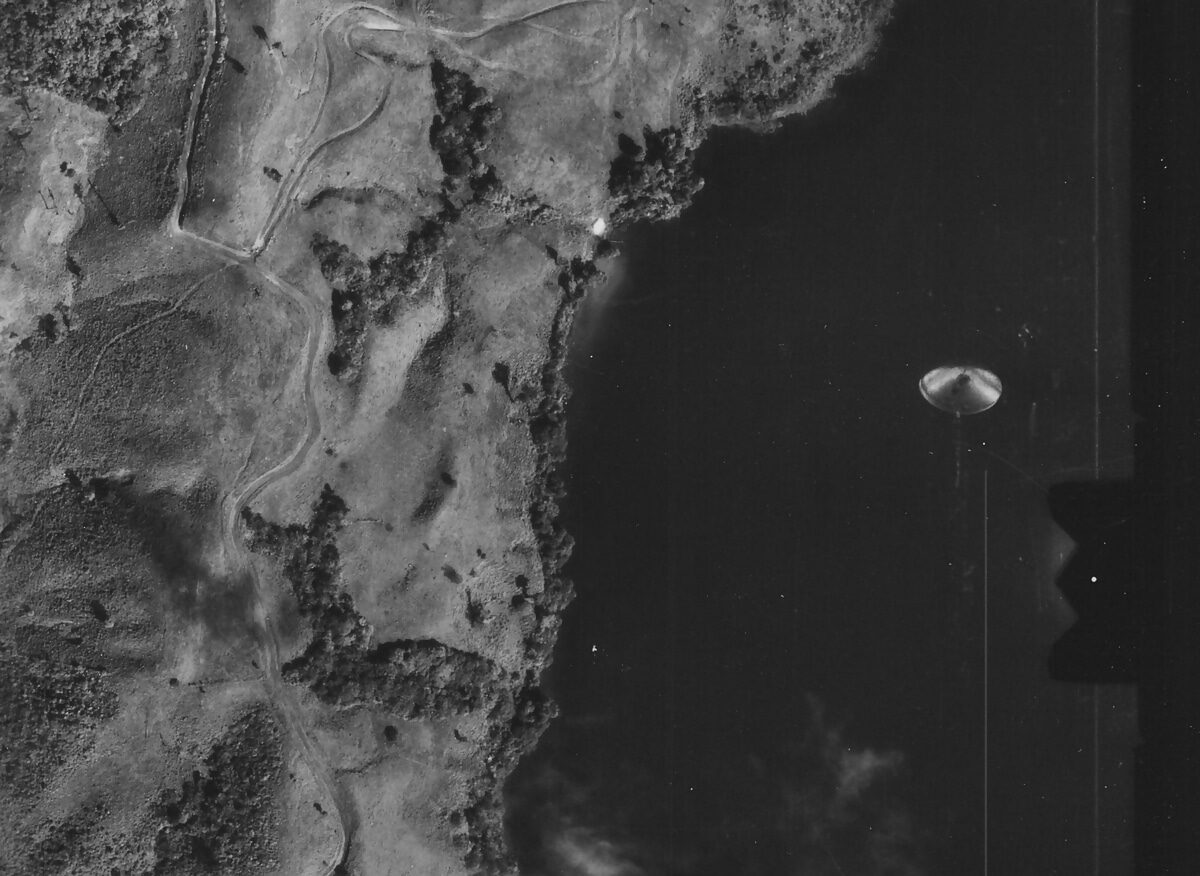
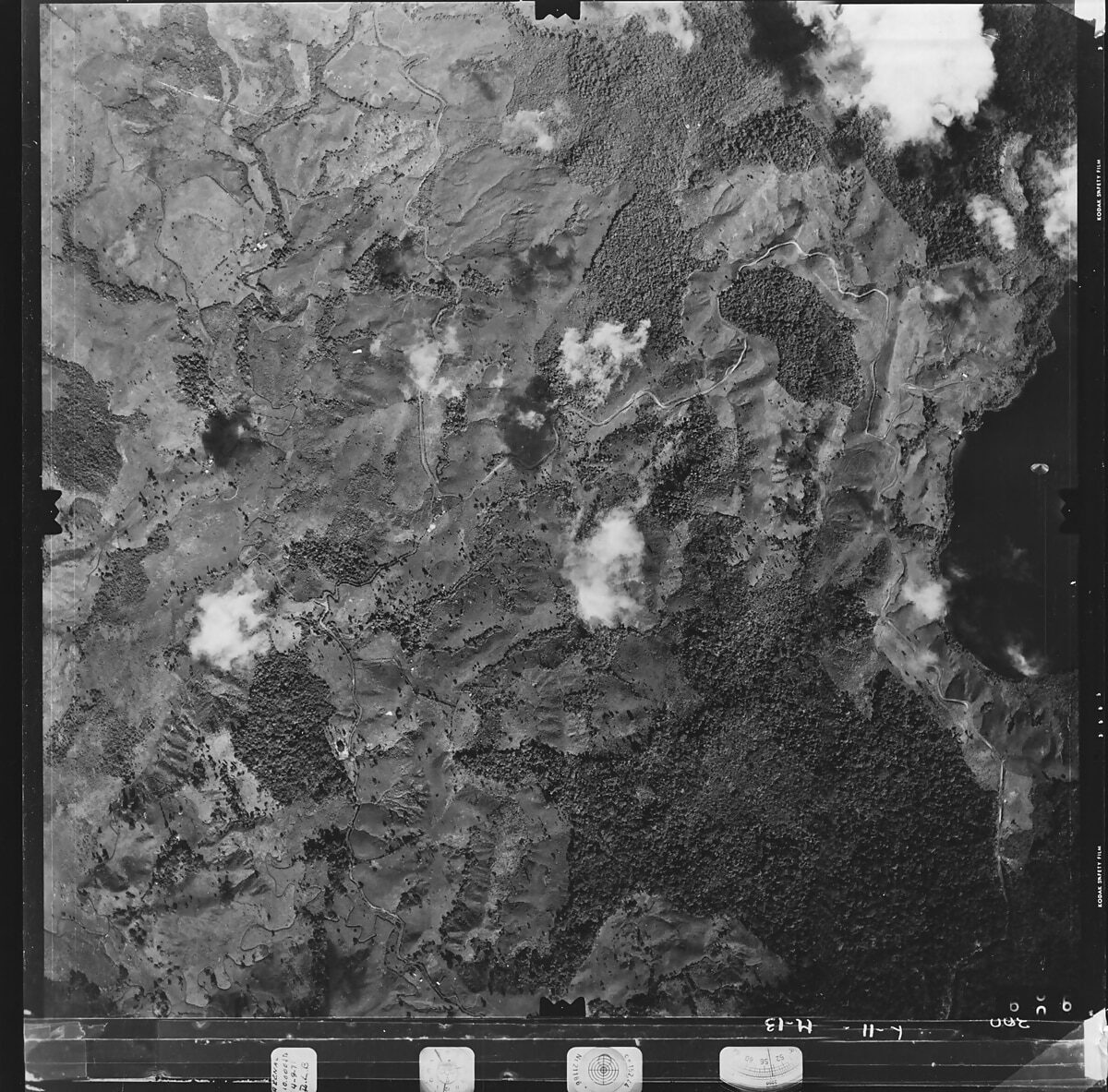

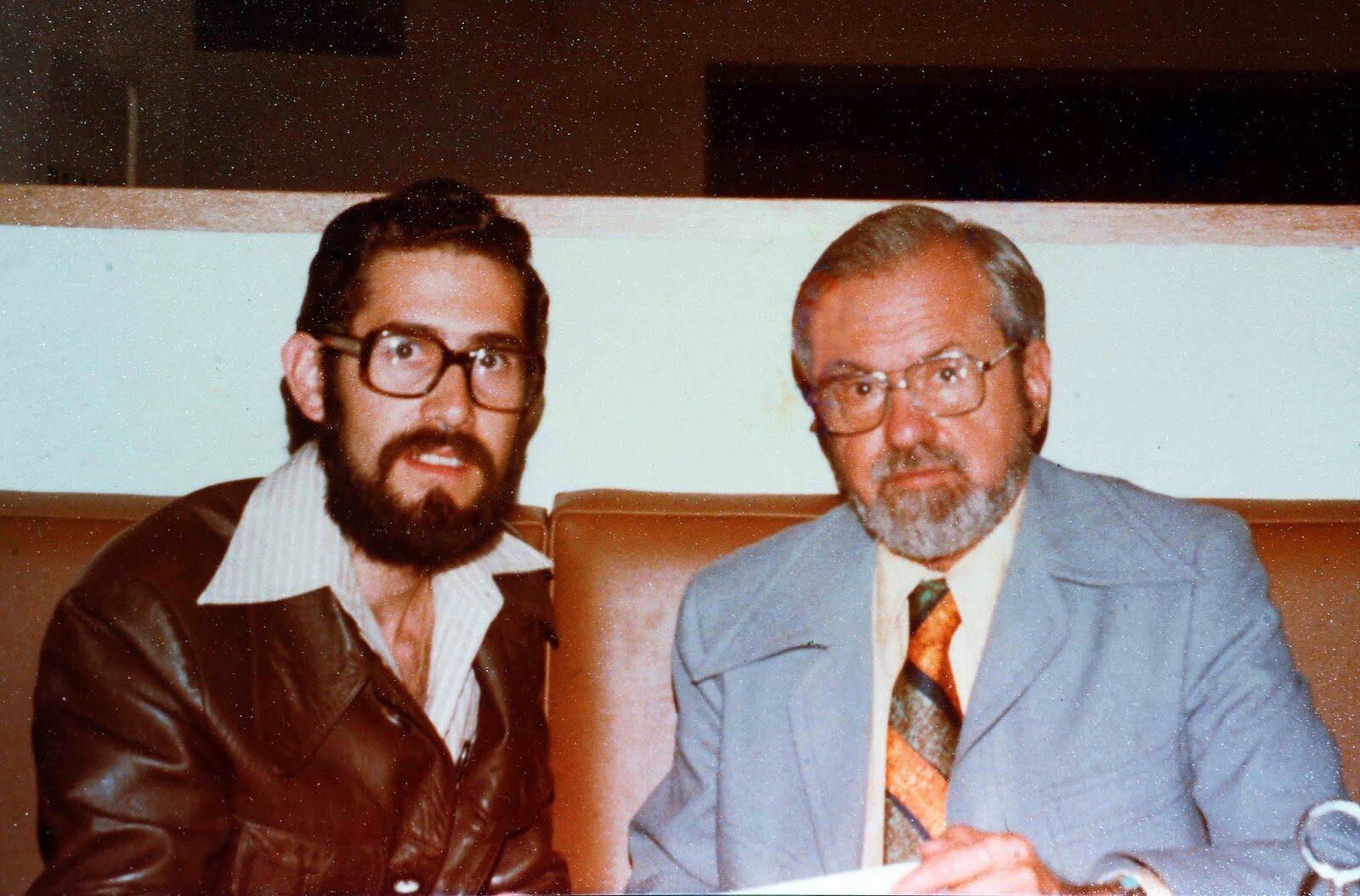
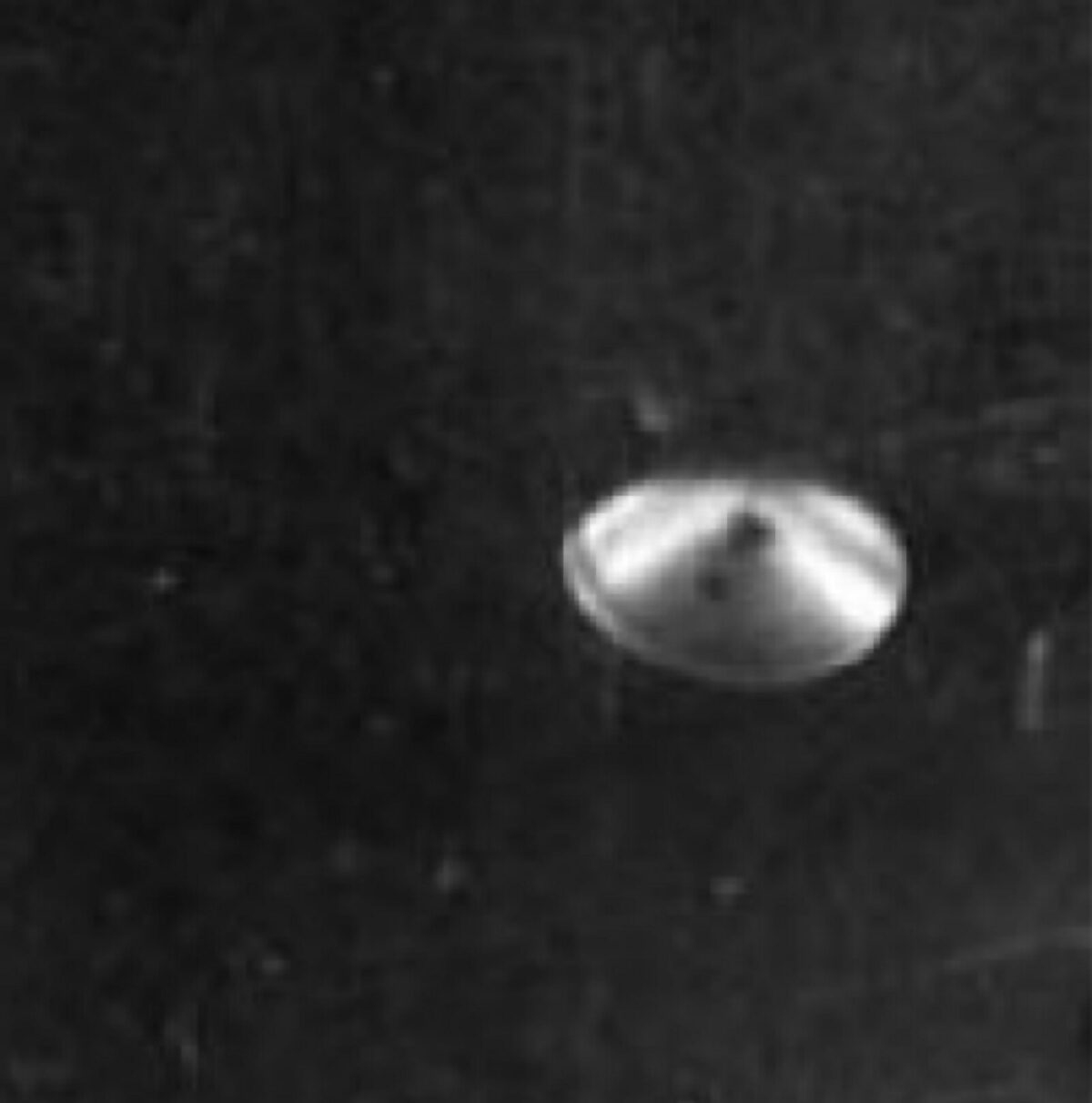
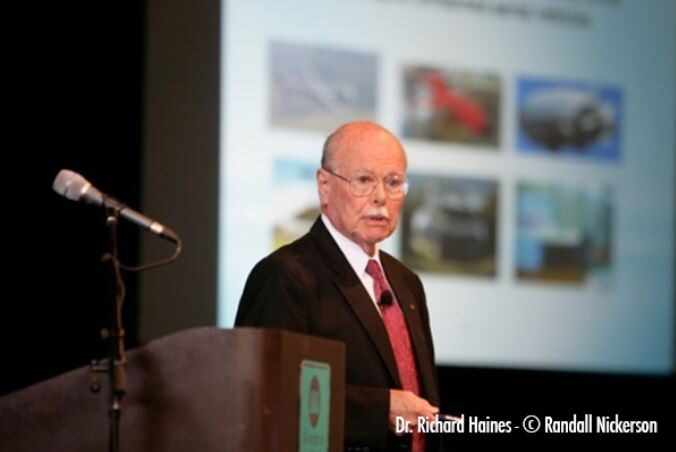




Reader Comments
RC
Summed up in a nutshell and the very subject I'm currently working on. Connect UFOs to DNA collection and storage and Cryptocurrency and you've got a Big Picture forming.
Fear and control and ownership of your soul.
[Link]
Clarification: "A 46 gauge". Then he opens up with a howitzer sized RPG.
Meanwhile, a 46 gauge gun would be smaller than a bb gun! (Using gauge sizes on shotguns, they go from really small 28 gauge, then 20, then 16, then 12, then 10 then 8, etc.)
RC
Something like this:
Aviation video - What is this trailing cone used for? - Lifestyle - Aeronewstv
"...“the static pressure is in fact absolutely necessary to measure the plane’s exact airspeed and altitude. The static pressure is therefore fundamental to measure the performance of a test aircraft.’’In tests yes... Because once the aircraft is in service there’s no reason to have a cable-trailing behind. To measure the static pressure, commercial aircraft are in fact fitted with sensors on the fuselage; sensors that are therefore subject to disturbed air-flow and thus giving inaccurate data. That’s the reason why, in order to correct these calculations, the trailing cone is used during the developmental phase.The test engineers determine the disrupting effect of the perturbed airflow of the plane with the sensors that are on the aircraft fuselage in relation to specific measurements that are done outside this disturbed flow. These data are then put into a computer and the resulting corrections from the flight tests are applied.Once this margin of error has been calculated, and the correction rate found, the cable can then disappear. Strictly speaking the cone plays only a stabilizing role; but sometimes, in the past, has finished up in the treetops. The test engineers on board having simply forgotten to wind the cable back in before landing. For test technicians that’s called "giving the cable a hard time." Or could we say, sometimes, there’s a twist in the tail?"
I had a visit to to the US Antarctic Program base at Harewood (Christchurch NZ) for a guided tour and talk on a visiting research aircraft (A Gulf Stream) from the University of Colorado Gravity Wave Research project (relating to weather). This aircraft had deployable sensor drogues like this all over it that could be deployed and winched in as needed.